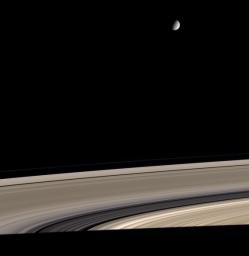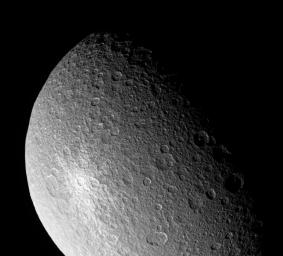One of the stories making the rounds lately has been this one on the formation of Iapetus' equatorial ridge. This theory, posited by Paulo C.C. Freire of Arecibo Observatory suggests that the ring formed as the result of Iapetus skimming the outer edge of Saturn's rings earlier in its history. No doubt, Iapetus is one battered and bruised body. It has no less than SEVEN impact basins larger than 400 km!! One, announced at the EGU conference in Vienna, is over 850 km wide and has a 400 km wide basin lying within it!! The shape of Iapetus is lumpy, with bulges 10-20 km above the reference ellipsoid, not to mention the ridge that is 10-20 km in places. The elllisoid itself is unusual. The shape suggest that Iapetus "froze" as a body that rotated with a period of 17 hours, compared to its current 79 day rotation.
Given all these unusual features related to this moon, what does this suggest and is this idea of the ridge being formed by the rings even possible? Somehow, I don't buy this. First, the author makes a big deal about the feature being on the equator. However, a ridge of that size need not FORM along the equator but the pole can shift so that the ridge (a rather large mass) could be on it. Secondly, if Iapetus did make short excursions into the inner Saturnian system, it would have seriously played havok on the inner moons.
Definitely, some thing seriously wrong happened to Iapetus. Maybe a satellite became disrupted and Iapetus bore the brunt of the onslaught of satellite debris?







